A resume template is a pre-designed document that provides an outline for creating a professional resume. It usually includes the basic sections of a resume such as contact information, objective, summary of qualifications, list of employment history, education, and other relevant information. Using a resume template can help make the process of creating a resume much easier.
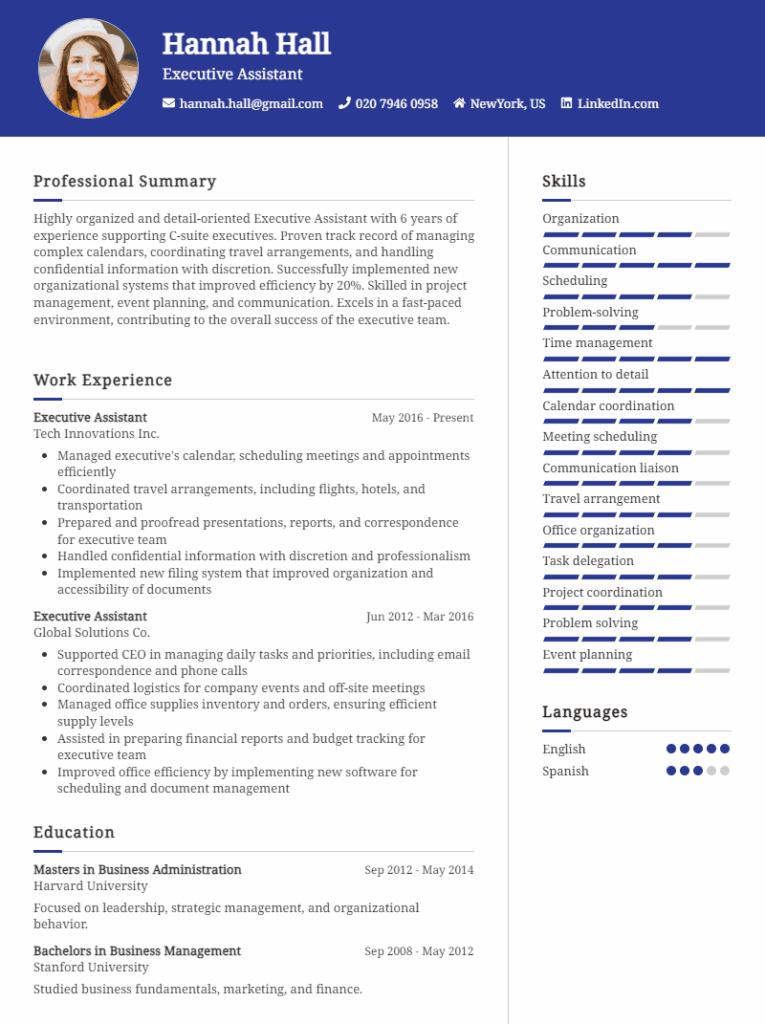
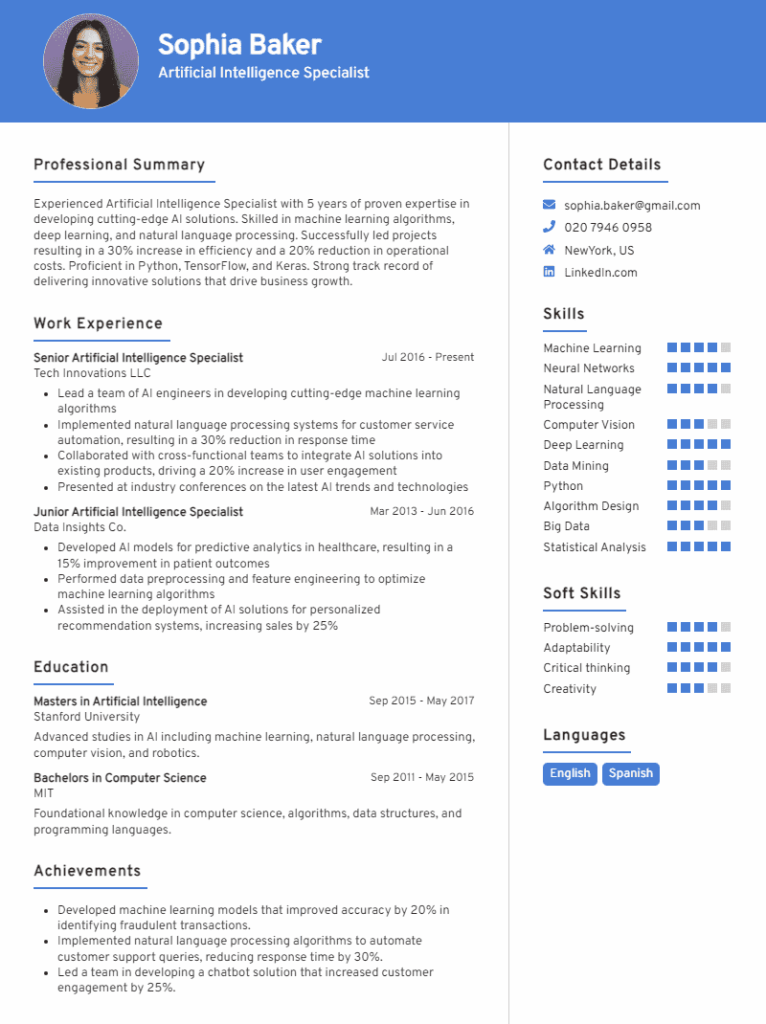

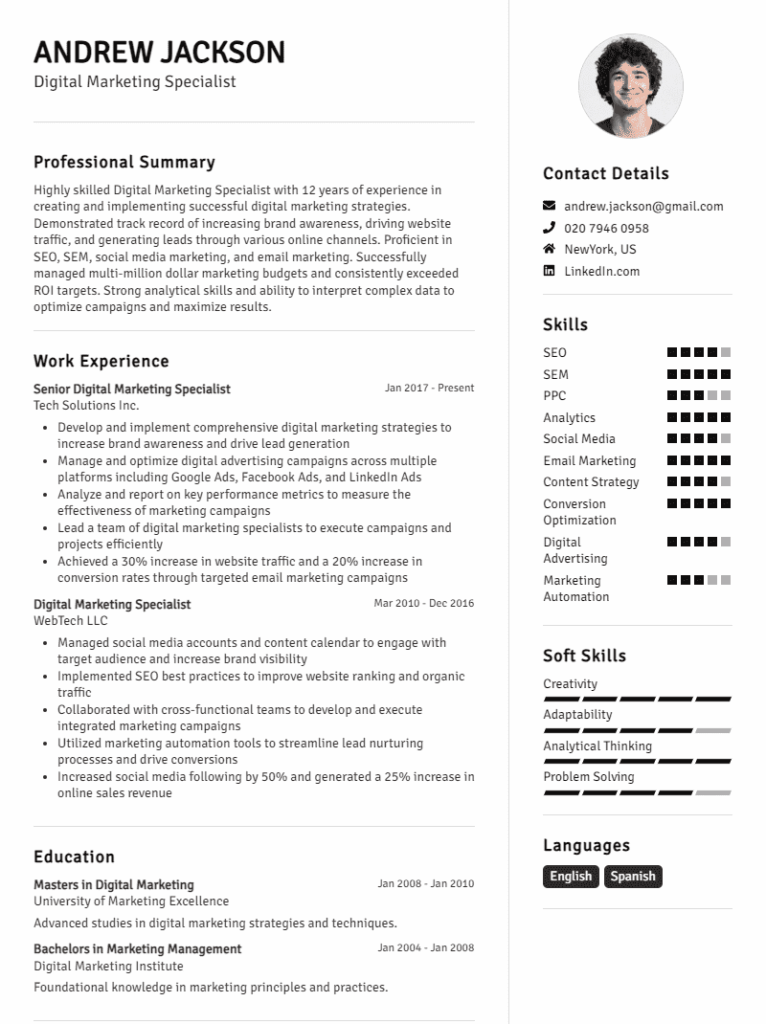
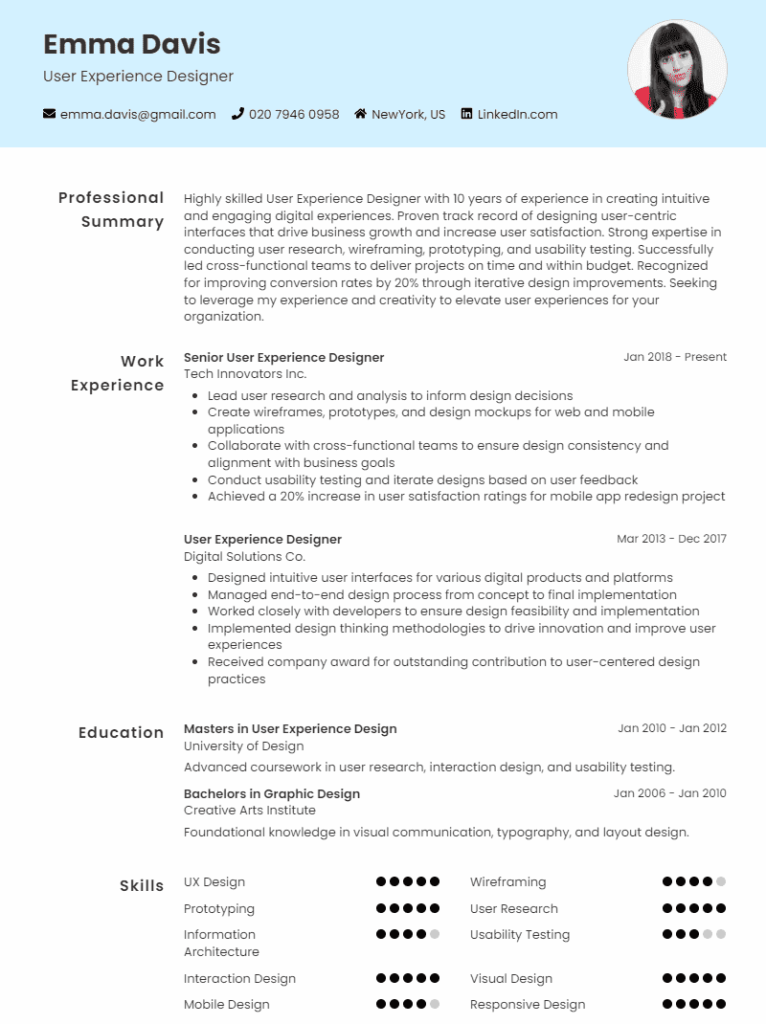

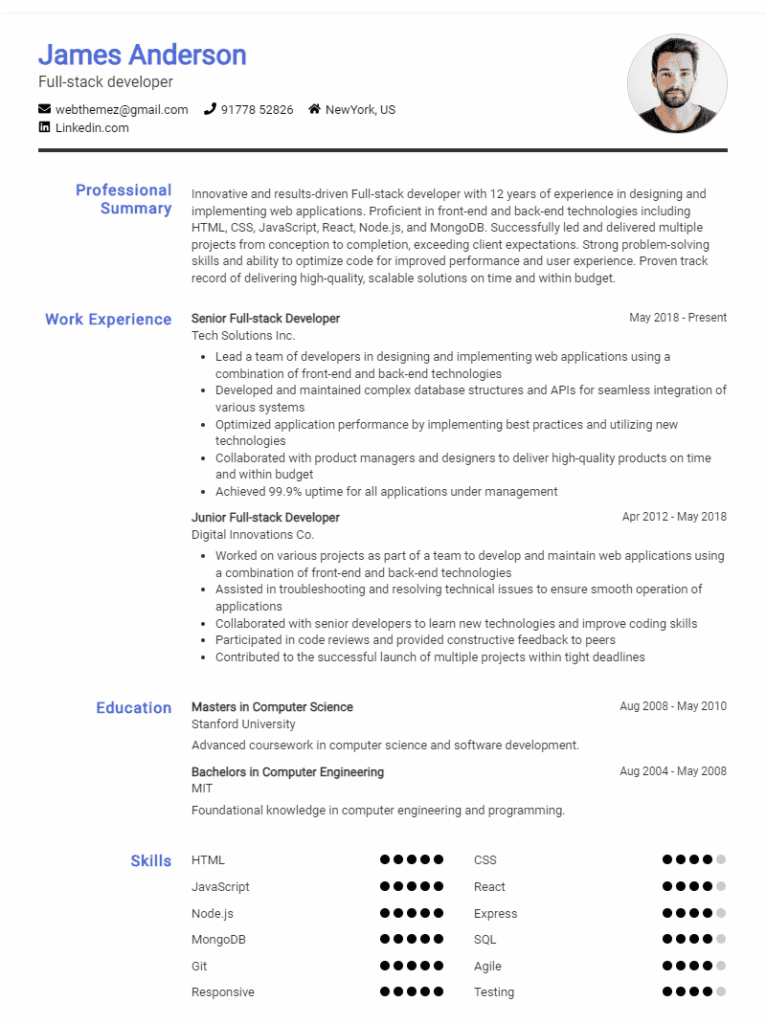
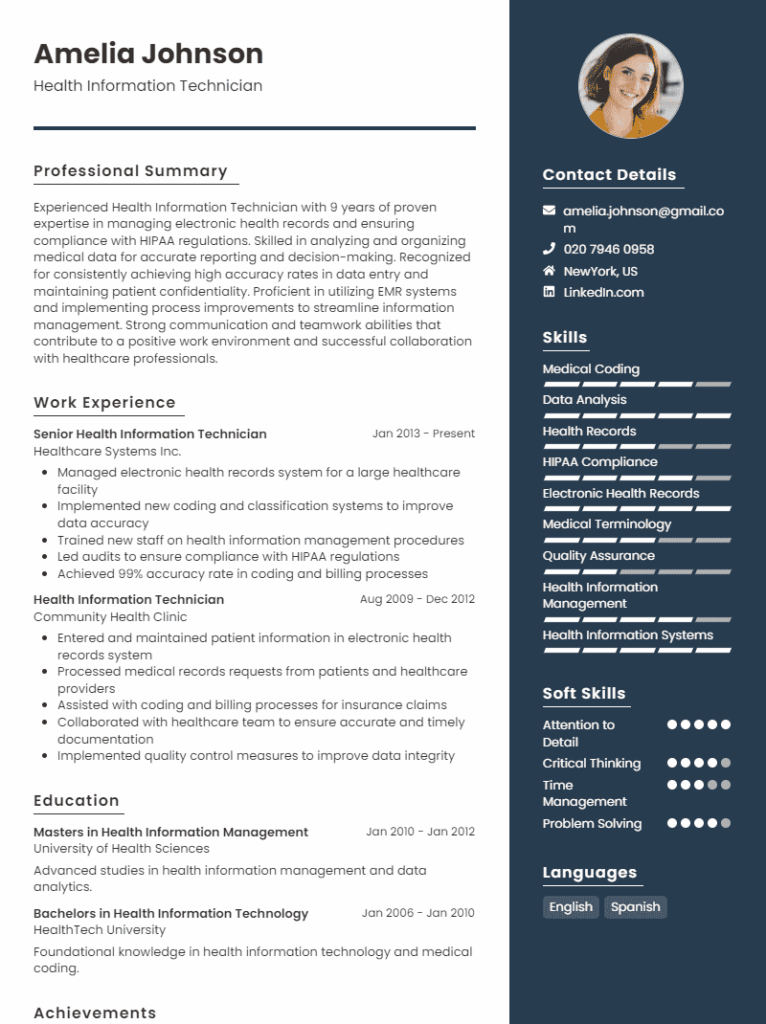
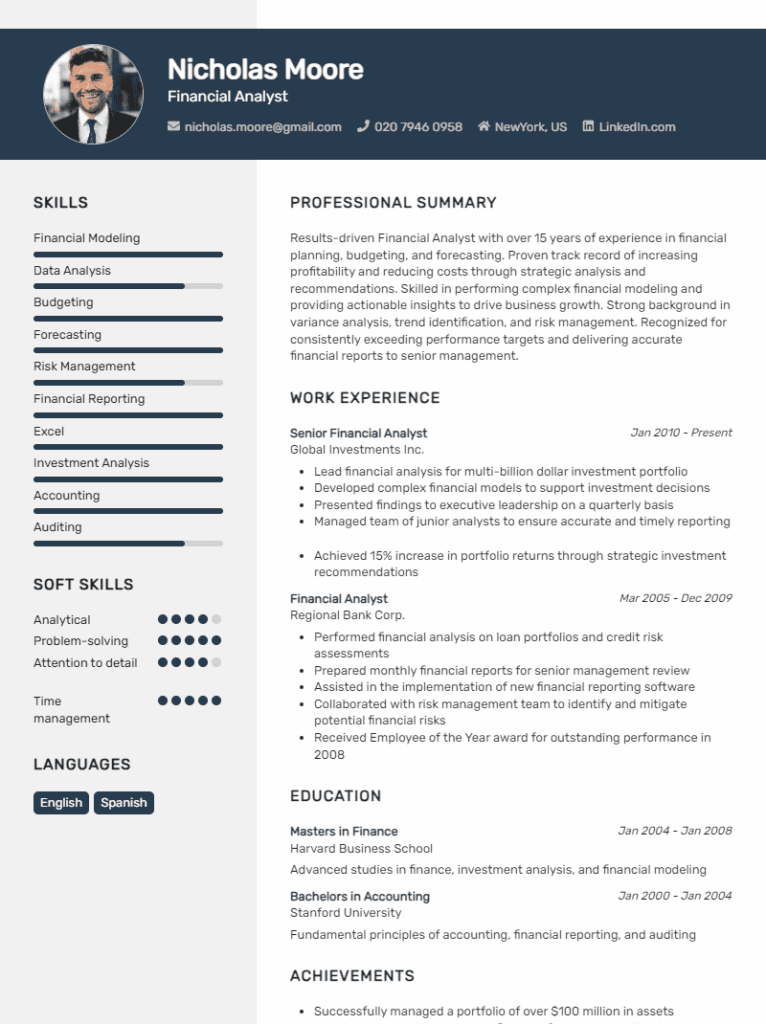
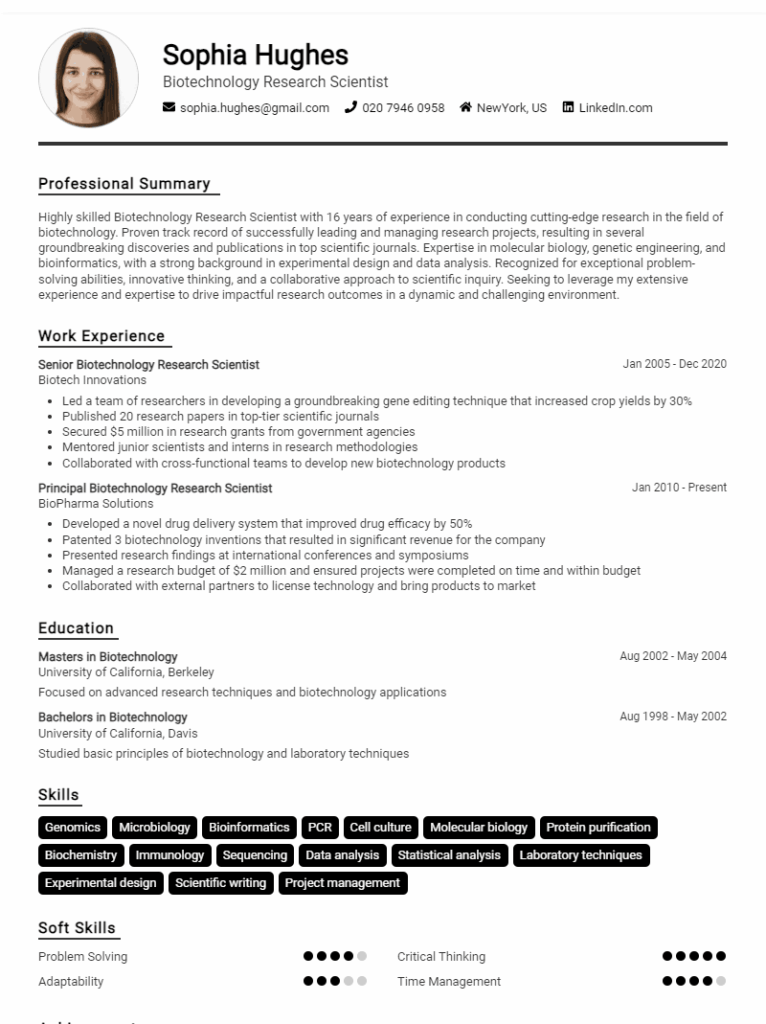
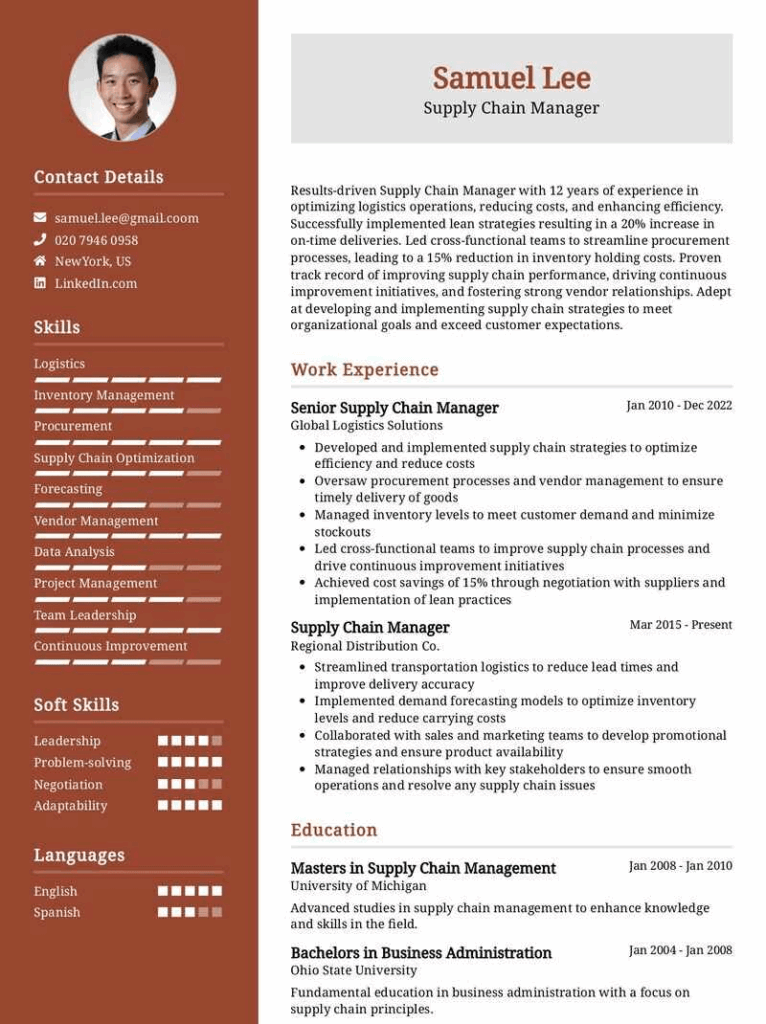
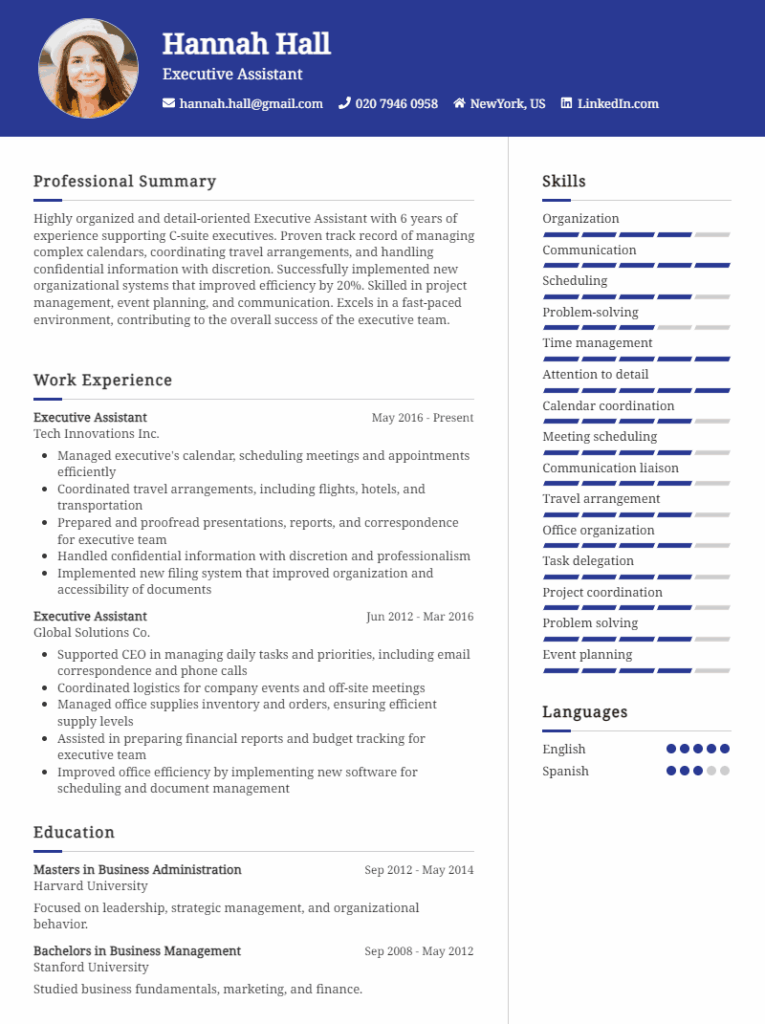
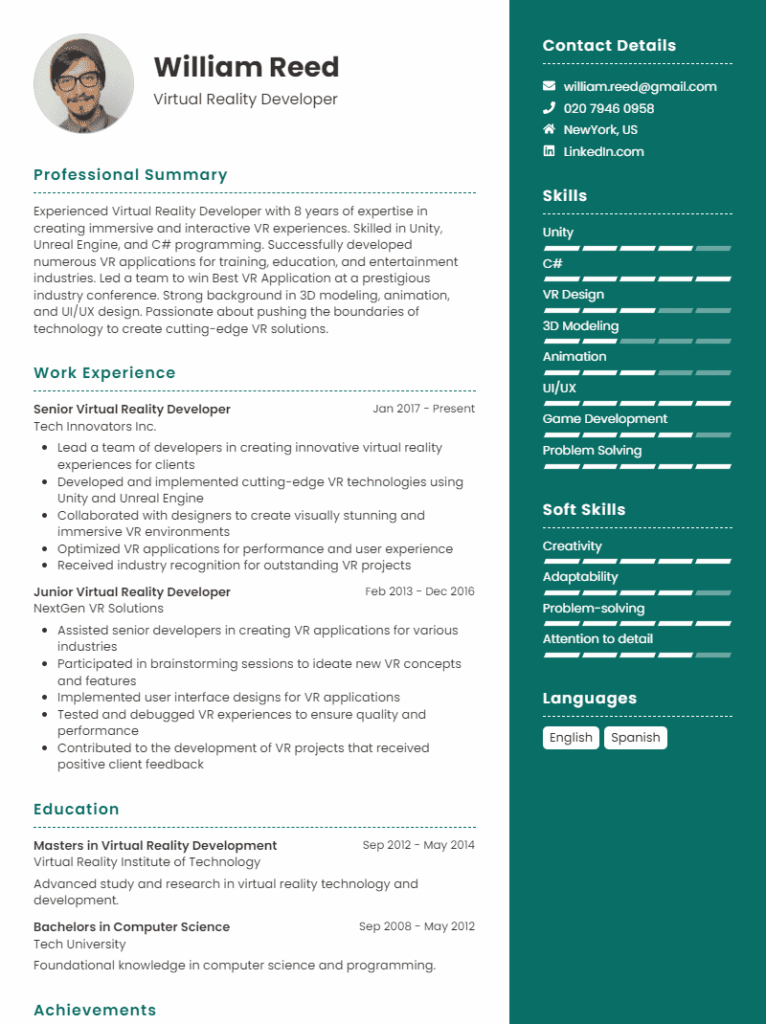
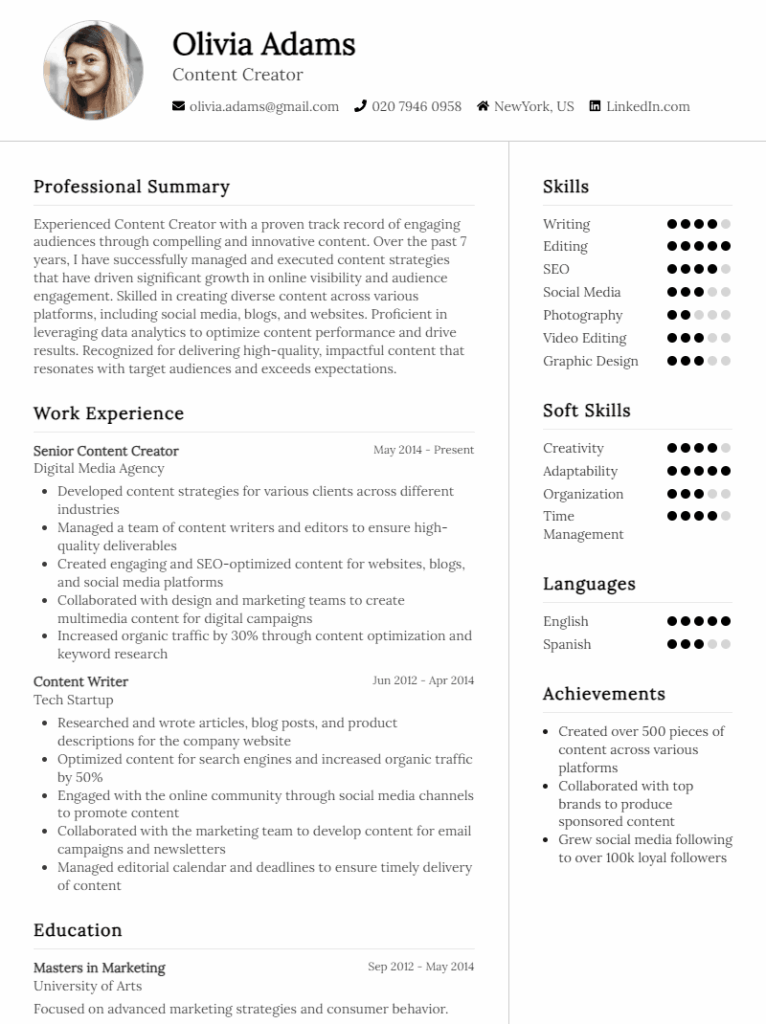

A resume template is especially beneficial for people who are new to resume writing or those who may not have much experience in the field. It gives a structure and format that can be easily followed. It also helps to focus the content in the resume and ensure that all the important information is included.
Most resume templates also come with examples that can be used as a guide for creating a resume. These can provide helpful suggestions for formatting and help ensure that everything is placed in the correct order. Additionally, resume templates may also provide sample phrases and other tips for writing an effective resume.
Overall, using a resume template can be a great resource for anyone who needs to create a professional-looking resume. It can make the process easier and help ensure that the resume is put together in the right way. By following the template and taking advantage of the tips and examples provided, anyone can create an effective resume that stands out from the competition.
In addition to these resources, be sure to check out our resume formats, resume examples, cover letter examples, job description, and career advice pages for more helpful tips and advice.
What is a resume?
A resume is an important document that outlines your work history, education, and qualifications for a job. It is often used to apply for jobs or internships, or to provide information to employers for consideration. A resume is usually the first document that a potential employer will see, so it is important that it makes an impact.
When creating your resume, it is important that you have a clear understanding of what you are aiming to accomplish. Do you want to highlight your strengths and qualifications to get the job you are applying for? Or are you trying to illustrate your experience in a certain field?
In addition, it is important to consider what information you should include. While resumes should include a chronological listing of your work history, educational background, and other qualifications, it is also important to include any additional information that could be beneficial to potential employers.
Finally, there are a few key components to consider when writing a resume. These include a well-written cover letter, clear and concise formatting, accurate information, and creative design elements. By keeping these elements in mind, you can create a resume that accurately reflects your skills and experience and gives you a great chance of getting the job you want.
How do you write a 2023 resume?
As the job market becomes more competitive, it’s important to ensure your resume is up-to-date and tailored to the position you are applying for. Writing a resume in 2023 requires a few new considerations, such as making sure your resume is optimized for applicant tracking systems, is tailored to the job you’re applying for and contains keywords.
To start, consider how you format your resume. Using a simple and consistent format will make it easier for employers to scan. Think about what you want employers to notice first and organize your resume accordingly. You should also consider how you present your experience. Do you want to use a timeline to illustrate your career progression, or do you prefer emphasizing the duties and achievements of each job?
It’s also important to optimize your resume for applicant tracking systems. Many employers use these systems to scan resumes for keywords relevant to their job posting. To ensure your resume makes it through an ATS, tailor your resume to the job you’re applying for by including specific keywords and phrases. Research the job posting and look up industry terminologies to make sure your resume is relevant.
Finally, make sure your resume is succinct and clear. Don’t forget to link to any relevant professional portfolios or social media accounts. With these steps, you can ensure your resume is up-to-date and tailored to the job you’re applying for in 2023.
What is the proper way to write a resume?
Writing a resume can be nerve-wracking and even a bit intimidating. After all, it is the first impression many potential employers will have of you and the best way for them to evaluate your skills and experience. Fortunately, there are some best practices that can help you create a great resume.
Good resumes should be concise and well-organized. This means that you should include only the most important, relevant information and clearly highlight your accomplishments. If a potential employer is looking through dozens, or even hundreds, of resumes, they will spend only a few seconds per CV. Therefore, it is important to make sure that the layout is clear and easy to read, and all sections are easy to find.
It is important to tailor your resume to the job you are applying for. This means that you should think carefully about the job requirements and make sure that your relevant experience and skills are highlighted on your resume. Be sure to include the most important skills and qualifications required for the job and make sure to use language that is consistent with the job’s description.
When writing a resume, it is also important to use strong action verbs that clearly describe your accomplishments. This will show potential employers that you are results-oriented and have a track record of success.
Finally, be sure to proofread your resume thoroughly and make sure there are no typos or grammar errors. Also, make sure that the formatting is consistent and that your resume looks professional.
By following these best practices, you can create a great resume that will help you stand out from the crowd and get the job of your dreams. Good luck!
What are 3 items that should not go into a resume?
When creating a resume, it is important to remember that some items should never be included. These items include anything that could be seen as inappropriate, unprofessional, or a personal opinion. Below are three items that should not go into a resume.
1. Religion: It is important to avoid including any mention of your religious beliefs in a resume. While some employers may wish to know about an applicant’s faith, it is best to leave this information out of the resume.
2. Political Affiliations: While it may be tempting to share your political views on a resume, it is best to avoid discussing any political affiliations. This type of information can make it difficult to find a job and can be seen as a potential source of conflict.
3. Personal Photographs: While a photograph may make a resume stand out, it is important to remember to leave personal photographs off of a resume. A headshot or other professional image is acceptable, but any other type of photo should be avoided.
By avoiding these items, it is possible to create a professional resume that will help you to land an interview and ultimately be successful in your job search.
How do you write a resume for the first time?
Writing a resume for the first time might seem daunting, but it doesn’t have to be. By following a few simple steps and having the right information on hand, the process of creating a resume can be broken down into manageable tasks.
The first step is to decide what type of resume you want to create. Do you prefer a traditional chronological resume, a functional resume, or a combination resume? Each has advantages and disadvantages, so it’s important to consider your experience and how it best translates to the type of job you are seeking.
Next, you will want to gather all your relevant information such as work history, education, awards and certifications, and any relevant skills or experiences. Make sure you have accurate dates and contact information for your previous employers, and be sure to double-check the spelling of any names you list.
Once you have your information organized, it’s time to start writing. Begin by crafting an engaging objective statement that includes your desired position and what makes you a qualified candidate. For example, “Seeking a position as an administrative assistant with a focus on customer service, where my experience and skills can be utilized to help the company grow.”
Then, move on to the body of your resume, which should incorporate both your work and educational experience. Be sure to list out your roles and responsibilities for each job, and describe the skills you acquired. For your educational background, include any degrees and certifications, as well as any specialized courses you may have taken.
How to write a student resume
Writing a student resume can be a daunting task, but with the right guidance, it doesn’t have to be. A good student resume should include sections on education, work experience, and achievements. The education section should include information such as the name of the school, years attended, and any degrees earned. It’s also important to include any relevant coursework and GPA.In the work experience section, include pertinent internships, volunteer work, and part-time jobs. Make sure to highlight any specialized skills that you’ve gained through these roles. The achievements section will showcase your awards and any other accomplishments, such as publications or key presentations.
It’s also important to make sure that your resume is visually appealing. Use a natural, easy to read font and make sure to include plenty of white space. Make sure to keep the tone professional and avoid using jargon or slang.
Finally, be sure to proofread your resume. Ask a friend or family member to look it over to make sure it is free of any errors. With the right guidance, you can create a student resume that will stand out and help you land your dream job.
Which template is best for resume?
When it comes to creating a resume, selecting the right template is an important decision. Without the right template, you could end up with an unprofessional-looking resume that won’t get you the job you’re after. Depending on the job, you may need a template with a more modern look or one that incorporates a more traditional design.
When choosing a template, you should consider both form and function. A modern template with a good design can provide a professional look and feel to your resume. On the other hand, a traditional template with a simple layout can be more effective for quickly displaying key information about your skills and experience.
Your choice of template should also be determined by your industry. For instance, if you’re applying for a technology job, you’ll want to use a template with a more modern design. If you’re applying for a job in education, a traditional template may be more appropriate.
Finally, you should also consider how well the template can be customized. Some templates are designed for easy customization, allowing you to make quick changes to the layout. Other templates may have more limited customization capability, so you may need to find a template that more closely matches your needs.
Choosing the right template can make all the difference when it comes to creating a professional-looking resume. It’s important to consider both form and function, as well as the industry you’re applying for. Additionally, make sure you select a template that can be customized to your specifications.
How to write a simple resume
Writing a resume can be an intimidating task, particularly if it’s your first time. However, by following a few simple rules and guidelines, you can quickly create an effective resume that will help you stand out among the competition.
The most important thing to remember when writing a resume is to keep it concise and concisely organized. Start by listing your most important information at the top, such as your contact information, work experience, and special skills. This will make it easier for potential employers to quickly identify who you are and what you can offer.
Next, include a section for your education, including any degrees or certifications you have earned. Be sure to include the dates of graduation, as well as any awards you’ve received. If you have any volunteer experience, make sure to include details about the organization and your role.
In the work history section, list all of your current and past employers and positions held. Include relevant job duties and accomplishments that demonstrate your value as a potential employee.
Finally, list any special skills or accomplishments you may have. This could include any special training or certifications you have earned, as well as any notable awards or achievements.
By following these simple tips, you can create an easy-to-read resume that will help you stand out from the rest of the crowd. Remember to keep your resume concise and succinct, and be sure to include all of your most important details. With a little bit of effort and preparation, you’ll have a resume that will help you find the job of your dreams.
What are 5 common mistakes that can be made on a resume?
When crafting a resume, it’s important to make sure you avoid common mistakes. Here are five of the most common mistakes that can be made on a resume:
1. Not Tailoring the Resume to the Job: It’s important to tailor your resume to the job you are applying for. This means avoiding generic phrases and demonstrating specific skills and accomplishments that demonstrate how you can meet the needs of the specific job opening.
2. Being Too wordy: It can be easy to get carried away with including too much information on a resume. Try to keep things concise and keep your resume to one page if possible.
3. Not Proofreading: Always proofread your resume multiple times to make sure there are no spelling or grammar mistakes. Also, double check that all the information is accurate and up-to-date.
4. Including too Much Personal Information: Keep your resume professional and only include relevant information. This means you should avoid including things such as your age, marital status, or religious beliefs.
5. Not Customizing Your Summary: Your summary should be customized to each job you apply to and should clearly demonstrate the skills and experience you bring to the position. Don’t just copy and paste the same summary for every job.
By avoiding these common mistakes, you can ensure your resume stands out and you can put your best foot forward when applying for a job.
Conclusion
In conclusion, creating a resume that stands out requires a bit of extra effort, but it can be done. By following the tips in this guide, you can create a unique resume that will help you get the attention of employers and increase your chances of landing the job you want. With a little bit of hard work, you can create a resume that will make a lasting impression.